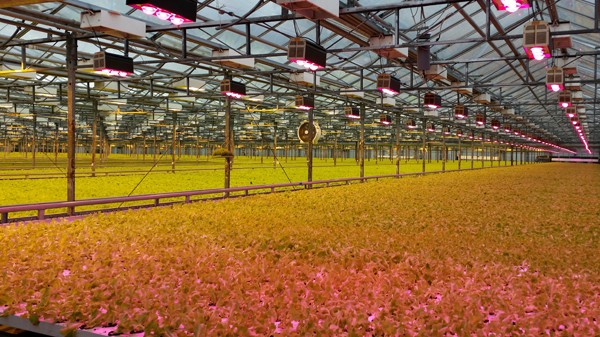LED and farming - a revolution sparks a revolution
05/2017
A lot has been said about the LED revolution in the lighting world.LED technology brings to the global lighting market a change on a level that hasn't occurred in 130 years, since Thomas Edison invented the electric light bulb. LED lighting brings many benefits to the industrial market, or to street lighting for example, but still hasn't changed the way a warehouse, factory, office or road is built. The effect on the agricultural market, however, is dramatic, and compares perhaps only to the invention of drip irrigation systems. |
 | The options that are introduced by LED lighting technology in agriculture are going to change the game, and revolutionize the way we grow agricultural products.What was, is not what will be. The places and ways of growing agricultural products are completely changing. And it seems it's only the beginning. All over the world more and more farmers are moving to LED lighting in greenhouses and especially in vertical farms and indoor farms. The global community is working overtime to crack the needs, conditions and optimal lighting recipes for short grow times and maximum yields. Dramatic changes are anticipated in growth and production methods of flowers, green leaf vegetables, herbs and cannabis, especially with the ongoing global trend of changing perceptions of cannabis use for medical purposes, and the growing acceptance of legalization. The use of artificial lighting in greenhouses will be mainly for adding light in addition to the sun, to increase lighting levels or to lengthen the day. |
Right now it seems that the biggest effect of LED lights will be on crops of green leaf vegetables and herbs, which can now be grown in vertical farms, on stacked shelves.The perception of space is changing, every shelf becomes an independent grow unit, with artificial lighting and a controlled environment. The low heat generated from the LED lights will allow them to be installed close to the plants, and with higher lighting levels at lower electricity consumption rates, a facility with vertically stacked shelves is possible. Each acre can become ten, and the idea of urban growth farms inside industrial buildings in city centers is becoming reality. The energy efficiency, the low heat, the photometry and life span are all important advantages, but the real game changer is the wave length, dimming and general control abilities of LED lighting. Working inside a structure will eliminate the uncertainty and dependence on the weather that's been a part of farming throughout history. The yearly yield will increase, and with correct planning the modern farmer will know exactly how many kilos of basil he will produce in a year, regardless of the weather and seasons. Vegetables will be grown in urban centers in close proximity to the customers, instead of in the suburbs, where there's access to large areas and fields. Transport costs will be reduced, customers will be able to get herbs that were picked the same day, and the product's shelf life will increase. It doesn't end there, the benefits are even greater. |  |
Vertical farms are clean facilities with an artificial isolated, pest free environment.In high quality facilities there will be no need to wash the vegetables before eating. Furthermore, as you explore and experiment more, there are possibilities for affecting the shape, color and general appearance of the plant, by choosing the right spectrum. There will also be a large significance to choosing the SPD – Spectral Power Distribution. The wave lengths and ratio between them, will affect the plant's height, the thickness of the leaves, the flavor and more. Lighting is extremely important in a vertical farm facility. It is a major part of costs, and has the largest effect on the success of the plant. It's important to work with a lighting company that is able to look at an entire system and understand which solutions will be best to create an efficient, reliable and precise facility, to ensure optimal growth. We might even see a change in the relationship between the farmer and the customer.The high certainty and accuracy of a vertical farm might introduce the idea that the farmer will know when planting exactly who he's selling to, when, and how much. This will remove the uncertainty in the farming market. With time we'll see fewer and fewer images of farmers throwing away or destroying surplus produce, we'll hear less of technical harvest and of produce that isn't harvested because there's no one to sell to. The change is already happening, and it's fascinating. Vertical farms are being created all over the world, flower greenhouses are lit by LED lights, more and more cannabis farmers are using the technology, and even entrepreneurs in different areas are showing interest in the field. We are living the revolution, and the original thinking that this market is creating is giving the feeling that we're on the verge of another great leap forward. The future is intriguing. |
